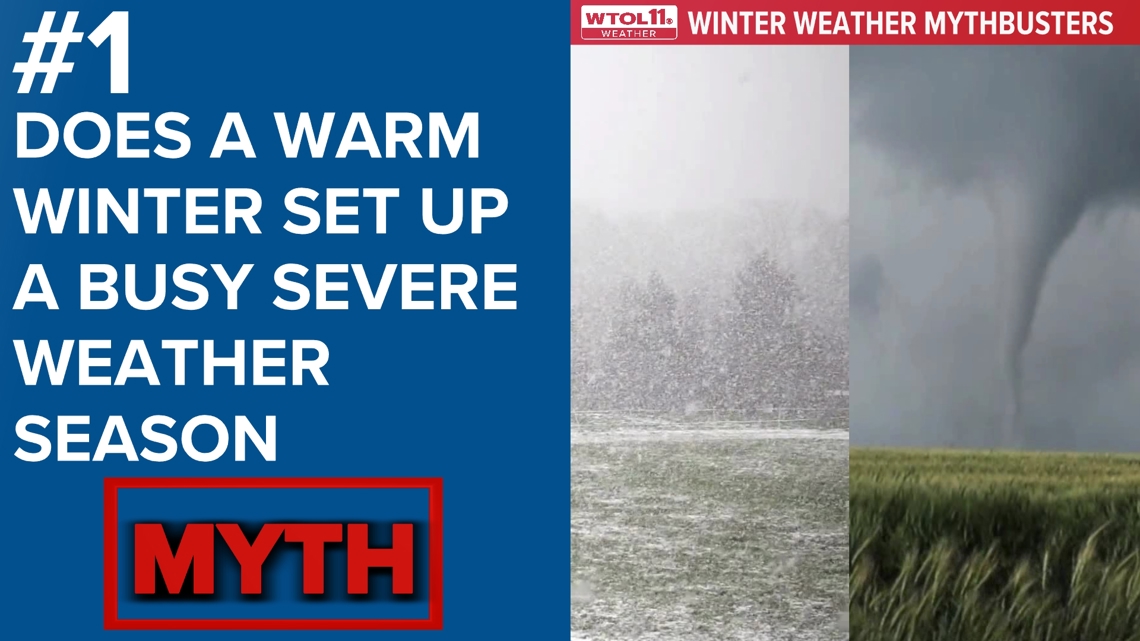TOLEDO, Ohio — The winter season is fast approaching. As temperatures finally drop into more seasonal conditions, the thought of winter comes to mind as the chill sets in during the middle of November. As every season of the year comes and goes, the physical appearance of almost everything changes during the winter months, sending most people inside to enjoy the warmth of a fireplace.
Similar to the severe weather season, the winter weather season can be drastic and aggressive, bringing mounds of snow and wintry weather to areas across the United States. Knowing the foundation of how winter weather works can keep you safe and sound from the dangers of the winter season.
We are here not only to keep you safe but also to dispel any folklore and myths about winter weather that you may have heard over the years. In this week’s WTOL 11 Weather Impact, we are breaking down the top 10 winter weather myths that you may hear about as winter approaches. We will be debunking each one and providing you with accurate information to stay safe and secure this winter. Let’s get started.
Myth #10: Going outside in the cold will make you sick
This is a myth to start us out. It is not freezing weather that makes you sick, and you can have a runny nose if you are out in it for a long time.
According to the National Weather Service, “Cold and flu are caused by viruses. They occur more during winter because people are indoors more, humidity is lower, and having a lower body temperature weakens the immune system."
If you are going to be outside during cold weather or snow, make sure you are completely bundled up to have the proper warming protection to stay healthy.


Myth #9: You cannot get sunburnt in the winter
It is well known that if you are out in the sun during the summertime without sunscreen, there is a good chance you can get sunburned. But did you know you can still get sunburned during the winter despite the colder weather?
According to the Central Pennsylvania National Weather Service, “in the winter, UV rays are not as strong as in the summer, but they can still burn your skin.”
The National Weather Service also stated that snow and ice reflect UV rays, which cause sunburn. This myth can be heavily misconstrued, and by the time you get home, you may see a sunburn during the winter months.

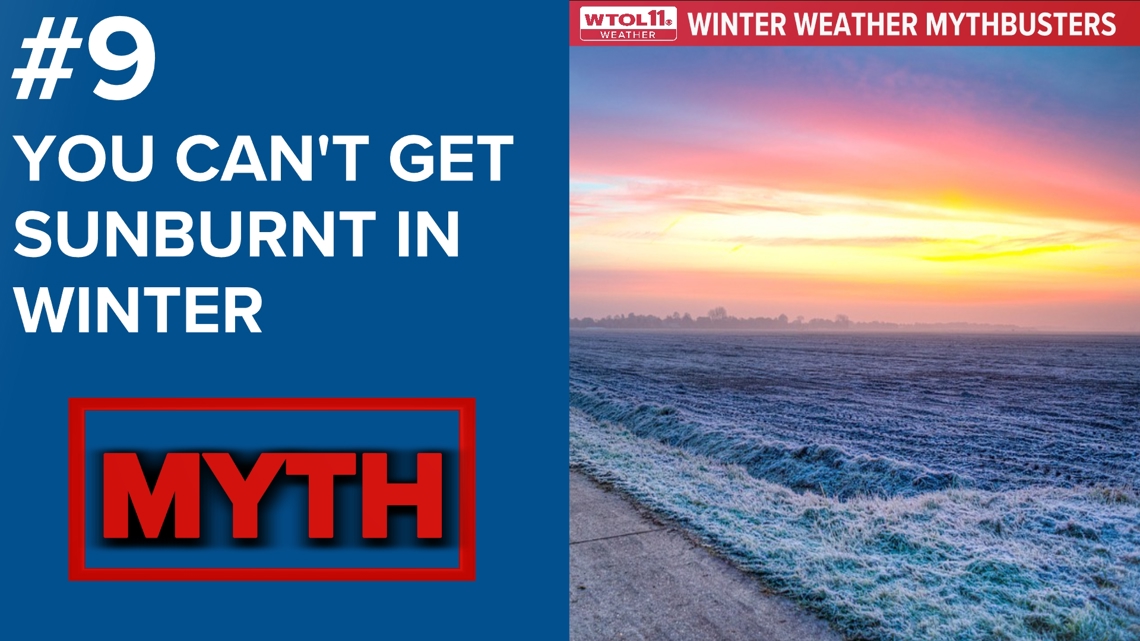
Myth #8: If the air temperature is above freezing snow and ice cannot form or roads
This is false. Freezing happens at 32 degrees Fahrenheit, but both air and ground do not have to be at freezing for snow and ice to occur.
There are many instances where wet snow can fall at 34-36 degrees. In this case, the ground temperature is 32 degrees or lower, which means snow and ice can and will form on contact due to the ground surface already being freezing.
Often, warmer air is present, and the precipitation falls as rain, but if the ground is already at 32 degrees, freezing rain will form on all surfaces, creating a nightmare situation for drivers. So overall, the air temperature does not always have to be at freezing for ice and snow to form on roads.

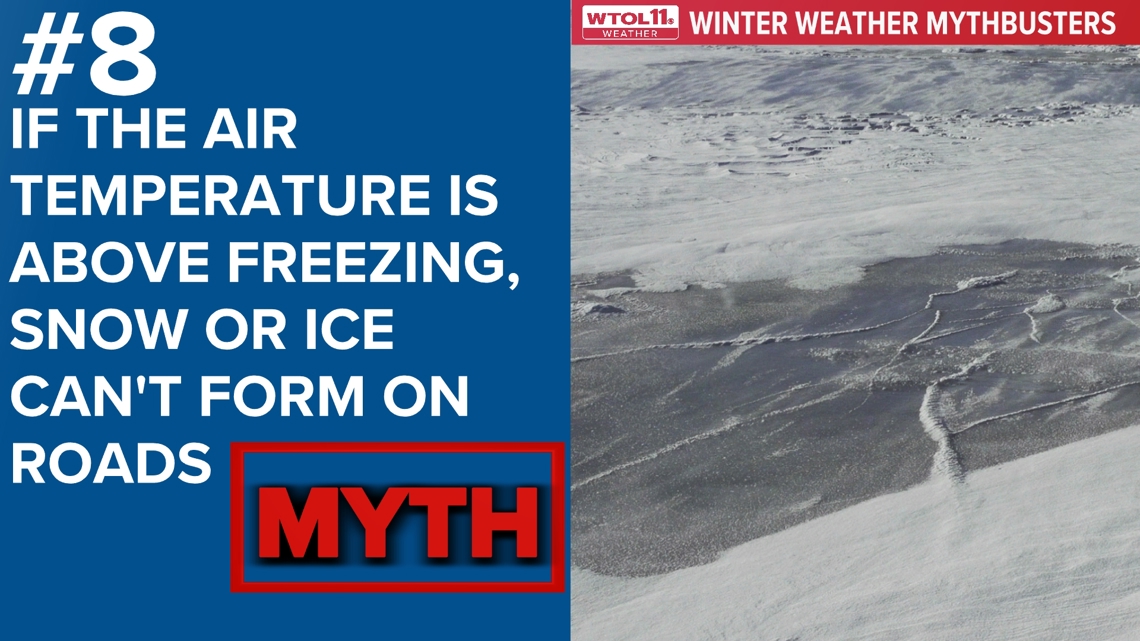
Myth #7: Roads typically freeze before bridges.
Roads are essentially deeply grounded foundations that take a significant amount of energy to warm and cool, but bridges are not the same. Bridges are surrounded by cold air in the winter.
The National Oceanic and Atmospheric Association suggests that “no ground underneath means the entire structure can be surrounded by cold air.”
NOAA suggests slowing down before the bridge, as changing speeds on ice can be dangerous.


Myth #6: Drinking alcohol keeps you warm during cold weather
This is a common myth that has been tested, more commonly at sporting events, if we had to guess, but it is a myth. In a recent article by the Cleveland Clinic, it was noted that “when you drink alcohol in the cold, your blood vessels dilate, sending more blood to your skin. This dilation brings blood closer to the surface of your skin, which can create a sensation of warmth or flushing.”
Drinking alcohol can be dangerous no matter what the temperature is. If you are drinking, make sure you are in a safe place and always hydrate before and after alcohol intake.

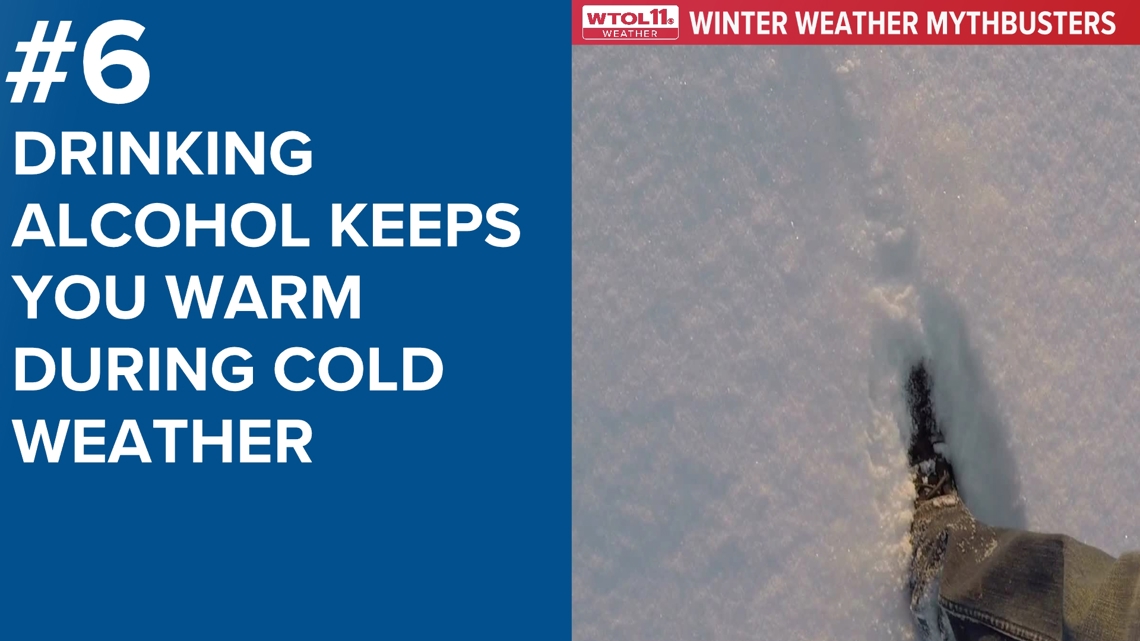
Myth #5: It is OK to eat snow and ice
You may remember seeing joyful Christmas movies where people stick their tongues out to catch snowflakes. Although that is a fun thing to do in winter, it can be highly unsafe.
In a recent article, Answer Financial noted, “don’t be fooled by the crystal-clear appearance of snow or even icicles. Frozen precipitation picks up air pollutants as it falls — in particular, toxic compounds from car exhaust — and may affect your health if ingested.”
It can be a tossup to catch snowflakes with your tongue, but the advice is to stay safe and not eat snowflakes.


Myth #4: Heavy snow means it is a blizzard
Many factors must be considered for a snowstorm to be called a blizzard. It is more than just having heavy snow in a system.
According to the National Weather Service, “Officially, the National Weather Service defines a blizzard as a storm which contains large amounts of snow OR blowing snow, with winds in excess of 35 mph and visibilities of less than 1/4 mile for an extended period of time (at least 3 hours).”
So, heavy snow is not the only thing needed to be categorized as a blizzard.

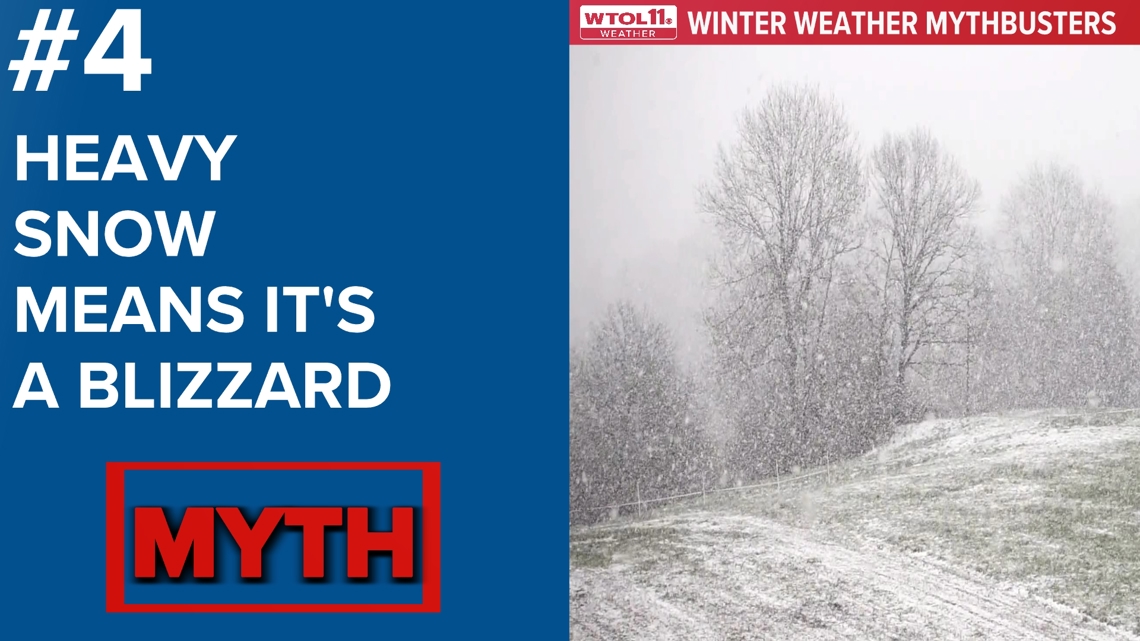
Myth #3: Woolly bear caterpillars can predict the winter ahead
We are rounding out the Top 3 weather myths for winter weather, and for this one, we are going to get into the folklore of weather.
While folklore has long said that examining a fuzzy woolly bear caterpillar can tell you how severe a winter can be, this just isn't scientifically sound.
The University of Arkansas Arthropod Museum expands on the woolly bear as a predictor belief, saying the European folklore asserts "that the amount of black on the woolly bear in autumn varies proportionately with the severity of the coming winter in the locality where the caterpillar is found. The longer the woolly bear’s black bands, the longer, colder, snowier, and more severe the winter will be."
The National Weather Service helps debunk this myth, noting, "The woolly bear caterpillar's coloring is based on how long caterpillar has been feeding, its age, and species. The better the growing season is the bigger it will grow. This results in narrower red-orange bands in its middle. Thus, the width of the banding is an indicator of the current or past season's growth rather than an indicator of the severity of the upcoming winter."
So no, just like the groundhog in spring, a caterpillar cannot tell us when and how bad winter will be.


Myth #2 Sipping hot drinks can warm you up
During the colder months, there is nothing like a warm cup of coffee or hot chocolate to warm you up as the steaming liquid flows down into your body. However, this is myth No. 2 on the list.
Although hot drinks are a great source of heat, they only provide temporary warmth. Within 5 to 10 minutes, your body temperature returns to normal after you finish that hot drink.

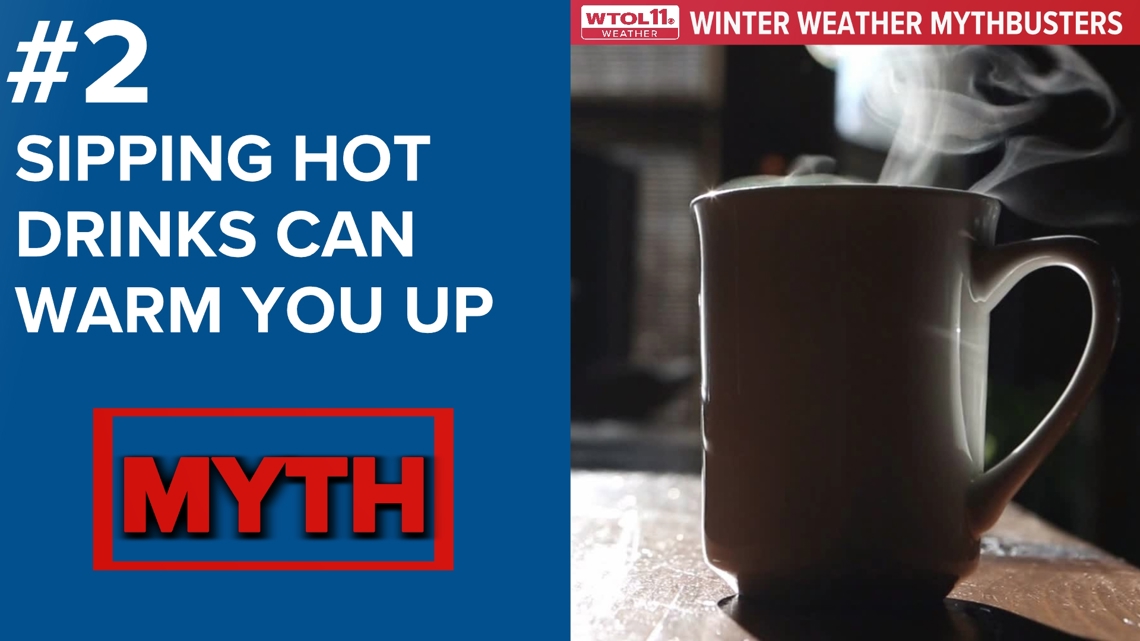
Myth #1: A warm winter sets up a busy severe weather season
Although a warm winter can bring warmer weather and more rain than snow, the two seasons do not feed off each other.
Warmer conditions earlier in the year can lead to an earlier onset of severe weather season for some regions. While warmer air increases the chances of severe weather, it is not the sole factor. La Niña also contributes to the likelihood of severe weather in certain areas by bringing warmer, moist air. Just like how we can still have snow chances in the spring, the same goes for severe weather chances in winter.
That rounds out our list of winter weather myth-busters and what to look for as we go throughout the winter season.

